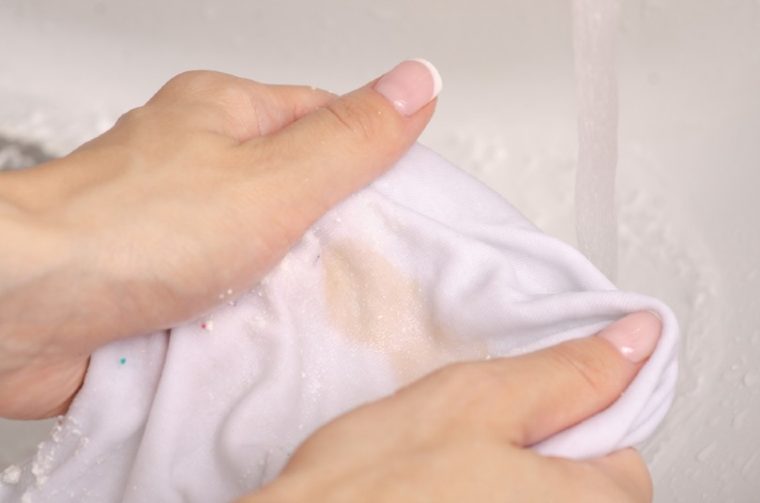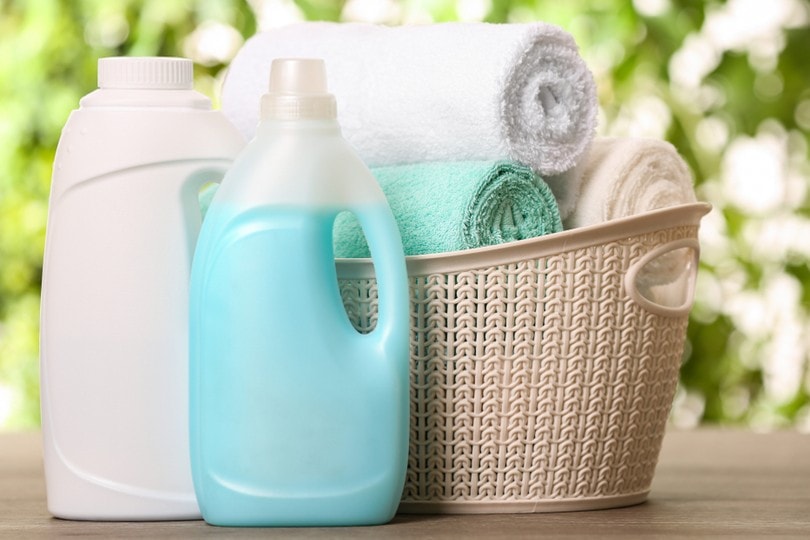
No one involved has fun when a cat throws up. The worst is when your cat vomits all over you. Everything about it is unpleasant, and you’re left with a stain on your new shirt or jeans. Luckily, getting cat vomit out of your clothes isn’t as hard as it seems.
Try out one of the methods in this article for getting cat vomit out of your clothes.

The 3 Ways to Get Cat Vomit Out of Clothes
1. Baking Soda and White Vinegar

Baking soda and white vinegar is a popular formula for cat vomit stains. The solution is simple and only uses two ingredients that most people keep in their homes, anyway.
The white vinegar in the mixture can be swapped out for lemon juice if you can’t tolerate the smell of white vinegar.
2. Enzyme Cleaner
Enzyme cleaners are among the most effective ways to eliminate bio-matter stains. They utilize biological enzymes that counter the bio-matter creating the stains. While most commercial enzyme cleaners are usually marketed toward removing urine odor and stains, they generally work well on most bio-matter stains, including vomit.
It’s essential to allow your enzyme cleaner to air-dry. Enzyme cleaners break down bio-matter compounds into gases that evaporate as the cleaner air dries. If you dry it any other way, you risk recrystallizing the compounds that the cleaner broke down, and the stain and smell will not go away.
If you're trying to find an enzyme cleaner that does it all, we highly recommend our favorite cleaner, the Hepper Advanced Bio-Enzyme Pet Stain & Odor Eliminator Spray.
- ADVANCED ENZYMATIC CLEANER - Penetrates the most stubborn smells and stains at the deepest molecular...
- FOR ANY MESS, ON ANY SURFACE - This pet odor eliminator cleans your carpets, floors, furniture,...
- FRESH, NATURAL ODOR - Our unique formulation doesn't rely on dangerous or unpleasant chemical...
It permanently removes the very worst stains and smells you can imagine and makes clean up a breeze. There's even a 100% satisfaction guarantee! Click here to order a bottle today.
At Pet Keen, we’ve admired Hepper for many years, and decided to take a controlling ownership interest so that we could benefit from the outstanding products of this cool cat company!
3. Laundry Stain Remover

Commercial stain removers for laundry are another option for pet parents looking to cut through the vomit stains their cat leaves behind.

What Cleaner Is Best for Me?
Determining what cleaner is best for you will largely depend on what you have at your disposal when you get vomited. If you’re a “think ahead” type who purchased enzyme cleaners or stain removers in advance, these will be great options for you. On the other hand, if you only have common home cleaning solutions, you may want to choose white vinegar and baking soda.
Stains take a while to set in a fabric. Still, time is of the essence in removing them. You want to remove the stain before it can set into the fabric’s fibers. So, choose the solution you have available in your house immediately for the best results.


Considerations and Hazards
Baking Soda and White Vinegar (or Lemon Juice)
Baking soda, white vinegar, and lemon juice are all food products that are non-toxic to most people. However, lemon plants are toxic for most animals, including cats, dogs, and horses. So, keep that in mind when using lemon juice around your pets.
If you’re treating your clothes with lemon juice, keep them far out of reach of animals. Hungry or curious mouths may find their way onto your clothes to lick up the juice, which could be dangerous for them!
Lemon juice could also bleach your fabric if used in high amounts. Additionally, any vinegar besides white vinegar has a chance of bleaching fabrics it comes in contact with. Baking soda can also discolor fabrics because it leaves a white residue on them, making them look dull and lifeless. Spot-test this method on your material as best as possible to see if it will have any adverse effects.
Enzyme Cleaners
Enzyme cleaners work by containing beneficial bacterial microbes that break down the bio-matter in compounds found in urine, feces, and food. The bacteria emit enzymes that break down the food, and then once the enzymes have done the work, the bacteria eat all the compounds produced by the enzymes, removing the stain.
Enzymatic cleaners are non-toxic for pets and biodegradable. So, you don’t have to worry about killing your pet or destroying the planet with these cleaners.
However, enzyme cleaners take a long time to work because bacteria are living beings that have to work to eat all the compounds their enzymes produce. An enzymatic cleaner can take up to 8 hours of air-drying to entirely remove the stain.

Laundry Stain Removers
Laundry stain removers are an excellent way to get your laundry clean. However, these cleaning compounds can be harsh on fabric and dangerous for any animals that contact them—a real worry when you’re cleaning a spot of material that your cat can throw up on! Therefore, you’ll want to be careful when using a commercial stain remover so your pet doesn’t ingest it.
Machine Washing and Drying
While machine washing is recommended once you’ve gotten the stain out, be very careful with machine drying any clothes that your cat has recently vomited on. The high heat can cause the stain to set and become more prominent. Avoid machine drying your clothes until you’re sure the stain is completely gone. Air drying the stain won’t cause it to set.

Final Thoughts
While it may not be the most fun chore, getting vomit stains out of your clothes is part of being a cat owner. Luckily, it’s not too tricky to get the stains out once you get the hang of it. A few household items are all you need to get your clothes looking brand new again!
Featured Image Credit: Kabardins photo, Shutterstock






